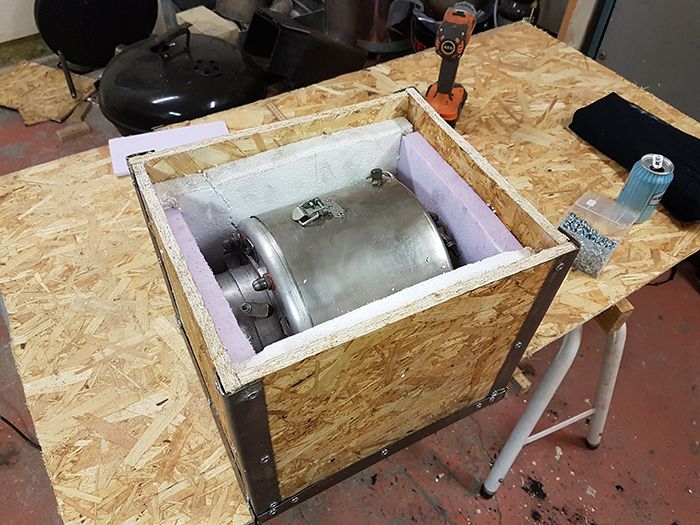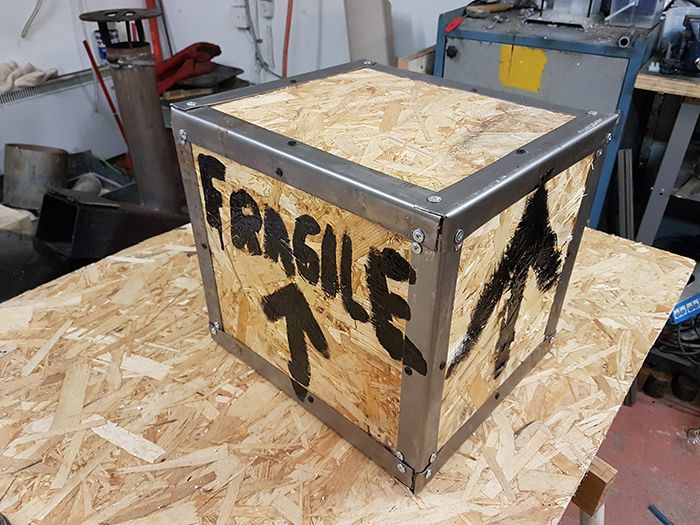Post by finiteparts on Sept 30, 2017 14:55:52 GMT -5
Anders,
I wonder if you and John have looked at how the NGV is installed in the 250 engine itself. Mounting the NGVs in a similar fashion would allow for a "low" stress configuration. If you look at how they are installed, the logic for managing the thermal growth in a low stress way is pretty clear. The NGV casting is centered by several outer bosses that are allowed to slip outward in a radial direction to allow for the thermal growth, but they are restrained tangentially to transfer the gas flow torque load to the outer structure.
flic.kr/p/YBsG7J
When the flange is clamped, so too are the outer bosses , which transfers the axial gas load to the outer structure also. The NGVs have a slip joint on either end to allow for axial growth. Additionally, the fourth stage has the NGVs in the middle of the axial span so that the loads induced by the vanes growing thermally can bend the outer wall (which is thin by the way) and not push out on the end connections. The forward end if fixed by a similar set of bosses to center the assembly and the aft end is allowed to ride on the outer casing. By moving the vanes away from the locations where the assembly is mounted, gives the structure an attenuation length to dissipate the radial and hoop stresses.
Be careful "cutting" the outer seal ring of the turbine. I have one that is split and it doesn't look like it was just a simple cut. It looks to me that they EDM'ed a slot that would break up the hoop stress, but it still have some connection on the forward and aft ends. They allow this to crack and thus form a very "tight" split line. My guess is they did this to control the vibrational modes of the turbine and with full cuts on the outer seal ring, it seems like it would be a very challenging vibrational problem (since there would be little to no damping).
flic.kr/p/XVvqZh
flic.kr/p/YBsHe3
I would be concerned about lopping off the seal ring also for a similar reason...those blades were never designed to vibrate in a fixed-free manner (fixed end on hub and free end at tip). They were designed to be fixed-fixed and changing that might put you in a bad fatigue situation if they start to vibrate. My guess is that with their slenderness ratio (Span vs chord), they would have a very low natural frequency.
Finally, here is the PT6 NGV that I mentioned. It is hard to see in the picture, but the trailing edge has bowed and cracked from the thermal cycling. This is a common failure for uncooled NGVs (just look at any old repair manual...J33, J44...etc...).
flic.kr/p/YXtZvS
By the way, I had to change how I add pictures because the link on the Quick Reply has disappeared and the other one in the standard reply window never worked for me.
Good luck!
Chris
I wonder if you and John have looked at how the NGV is installed in the 250 engine itself. Mounting the NGVs in a similar fashion would allow for a "low" stress configuration. If you look at how they are installed, the logic for managing the thermal growth in a low stress way is pretty clear. The NGV casting is centered by several outer bosses that are allowed to slip outward in a radial direction to allow for the thermal growth, but they are restrained tangentially to transfer the gas flow torque load to the outer structure.
flic.kr/p/YBsG7J
When the flange is clamped, so too are the outer bosses , which transfers the axial gas load to the outer structure also. The NGVs have a slip joint on either end to allow for axial growth. Additionally, the fourth stage has the NGVs in the middle of the axial span so that the loads induced by the vanes growing thermally can bend the outer wall (which is thin by the way) and not push out on the end connections. The forward end if fixed by a similar set of bosses to center the assembly and the aft end is allowed to ride on the outer casing. By moving the vanes away from the locations where the assembly is mounted, gives the structure an attenuation length to dissipate the radial and hoop stresses.
Be careful "cutting" the outer seal ring of the turbine. I have one that is split and it doesn't look like it was just a simple cut. It looks to me that they EDM'ed a slot that would break up the hoop stress, but it still have some connection on the forward and aft ends. They allow this to crack and thus form a very "tight" split line. My guess is they did this to control the vibrational modes of the turbine and with full cuts on the outer seal ring, it seems like it would be a very challenging vibrational problem (since there would be little to no damping).
flic.kr/p/XVvqZh
flic.kr/p/YBsHe3
I would be concerned about lopping off the seal ring also for a similar reason...those blades were never designed to vibrate in a fixed-free manner (fixed end on hub and free end at tip). They were designed to be fixed-fixed and changing that might put you in a bad fatigue situation if they start to vibrate. My guess is that with their slenderness ratio (Span vs chord), they would have a very low natural frequency.
Finally, here is the PT6 NGV that I mentioned. It is hard to see in the picture, but the trailing edge has bowed and cracked from the thermal cycling. This is a common failure for uncooled NGVs (just look at any old repair manual...J33, J44...etc...).
flic.kr/p/YXtZvS
By the way, I had to change how I add pictures because the link on the Quick Reply has disappeared and the other one in the standard reply window never worked for me.
Good luck!
Chris








